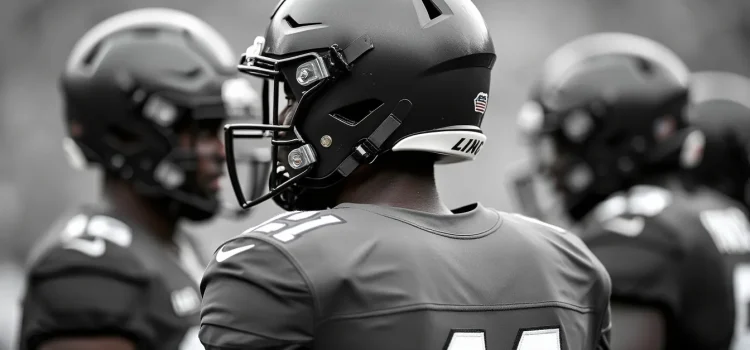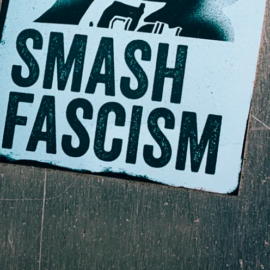

This article is an excerpt from the Shortform book guide to "Mediocre" by Ijeoma Oluo. Shortform has the world's best summaries and analyses of books you should be reading.
Like this article? Sign up for a free trial here.
Is racism in the NFL more pervasive than we realize? How has the sport’s evolution reflected broader societal issues?
According to Ijeoma Oluo, football’s journey from an elite white college game to a multibillion-dollar industry reveals deep-rooted racial dynamics. The NFL’s history showcases both progress and persistent challenges in addressing racism and inequality.
Keep reading to explore how American football mirrors societal struggles and the ongoing fight for equality in sports and beyond.
Racism in the NFL
Oluo ends her book by arguing that American football encapsulates the dynamics of white male mediocrity. She charts the sport’s evolution from a game for elite white college students to a multibillion-dollar industry (in the form of the National Football League, or NFL). She points to racism in the NFL, where Black athletes are exploited and silenced. Oluo asserts that white men have employed many tactics to maintain their control over a sport increasingly dominated by Black stars.
Preserving a White Monopoly Over the Game
Originally a collegiate sport, football was for a while a strictly white male pursuit. But, as Black stars gradually won spots on college teams, Oluo says, the white male football establishment resorted to a familiar set of tactics intended to keep the game exclusively white. In particular, Black players faced racially motivated verbal and physical abuse. Oluo details several examples of early Black players who were deliberately targeted by excessive on-field violence—two of these men were hospitalized and a third was killed.
When Black players persisted in the face of these violent assaults, they were sometimes simply barred from playing. Oluo explains that some teams—particularly from schools located in the South—simply refused to play against teams with Black players, going so far as to voluntarily sit out their own star players in exchange for opponents leaving their Black players out of their lineups.
(Shortform note: Not only did Black players face more violence on the football field, they often found it more difficult to get properly compensated for career- and life-affecting injuries. For instance, until 2021, the NFL’s cognitive tests used an explicitly racist practice called “race norming,” which assumes that Black people naturally have lower cognitive abilities than white people. As a result, if a Black player and a white player suffered the same head injury, the Black player would receive less compensation, because the racially biased test would show that the Black player had less loss of function.)
Similarly, although there were a few Black players in the early NFL, Oluo argues that the league established an unofficial color line between 1934 and 1946. She says the ban on Black players during this period was the brainchild of George Preston Marshall, the openly racist owner of the franchise formerly known as the Washington Redskins—“Redskin” being a racial slur against Native Americans.
(Shortform note: Marshall’s racist legacy has followed the Washington team even to the present day. Washington’s team didn’t drop their offensive name until 2020—the same year that Mediocre was published. Even that change happened slowly and with great resistance from then-owner Dan Snyder. Snyder only agreed to change the name when some of the team’s biggest financial sponsors threatened to withdraw their support in the wake of 2020’s Black Lives Matter protests and the increased national attention to racism that came with those protests. The team officially became the Washington Commanders in 2022, but even in late 2023 there were still viral petitions demanding that the name be changed back.)
Oluo says that Marshall pressured the rest of the NFL’s coaches and owners to exclude Black players from the league. The league gradually integrated in spite of his efforts, though Oluo says it took competition from the already-integrated American Football League and (in Marshall’s case) pressure from the federal government to make that happen.
(Shortform note: Contrary to what Oluo writes here, the NFL credits its integration to efforts from Black sportswriters and the Los Angeles Memorial Coliseum Commission. An article on the official NFL site says that both its own team the Rams, and a team from the rival All-America Football Conference (AAFC), agreed to hire Black players as a condition of leasing the Memorial Coliseum.)
Stifling Progress by Marginalizing Black Players
Oluo suggests that, whenever women or people of color establish a foothold within what was an exclusively white male domain, the white male establishment looks for ways (such as housing covenants) to limit and undermine that progress. Since the NFL integrated, Oluo says, a similar pattern has emerged in football: Instead of trying to exclude Black players, the white football establishment now attempts to limit their political power within—and beyond—the sport.
For one thing, although the NFL now accepts Black players within its ranks, it seldom offers them coaching or front office positions, instead reserving that power for white men. Oluo points out that while the majority of the league’s players are Black, few of its coaches, fewer of its GMs, and none of its team owners are. Oluo argues that this racial imbalance contributes to an exploitative labor environment in which Black people are allowed to do the dangerous physical work of playing the game, but are rarely allowed to help administrate the sport or otherwise represent their own interests.
(Shortform note: The NFL’s “Rooney Rule,” implemented in 2003, was designed to promote diversity in head coaching positions by requiring teams to interview at least one minority candidate for these roles. However, the league’s enforcement has been inconsistent, leading to a regression in diversity among the NFL’s head coaches. In 2017, the league saw a high point with eight Black head coaches out of 32 teams. However, by 2022, this number had drastically decreased to just three Black head coaches, and only six non-white head coaches in total. This significant backslide raises questions about the Rooney Rule’s effectiveness and the league’s commitment to its stated diversity goals.)
Furthermore, Oluo says that the football establishment has sought to limit Black political power beyond the game itself. She argues that the league’s response to Black-led political activities—such as kneeling during the national anthem to protest police violence, which got former quarterback Colin Kaepernick blacklisted—is an attempt to silence Black players’ political expression in order to protect white identity and power.
Additionally, she says that the NFL’s opposition to a peaceful Black political movement is just one demonstration of how much the white male establishment (in football and elsewhere) fears Black advancement.
(Shortform note: The NFL—and other businesses—are reluctant to advance Black interests not just because of their own racism, but also because they fear racist backlash from their customers. When President Trump escalated tensions in 2017, team owners briefly displayed solidarity with Kaepernick and other protesting players, making a show of hearing their concerns and supporting their cause. However, this gesture may have been motivated by owners’ irritation at Trump’s interference in league affairs more than by genuine concern for Black issues. But as Trump continued to criticize the kneeling players, owners abandoned these unity efforts due to concerns about losing business from Trump supporters.)

———End of Preview———
Like what you just read? Read the rest of the world's best book summary and analysis of Ijeoma Oluo's "Mediocre" at Shortform.
Here's what you'll find in our full Mediocre summary:
- Why underqualified white men are in powerful positions
- How toxic white men have reacted to social progress
- The presence of white supremacy in American football






